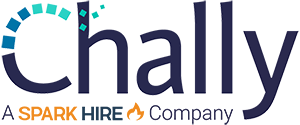3 Key Questions to Ask Before Training Your Inside Sales Reps
What training do inside sales reps need in order to improve their sales performance? We get asked this question often, and we understand it – inside sales leaders want to be smart with their training dollars. But to answer the question properly, first we need to understand the exact purpose of the role, the responsibilities of the sales reps and the kinds of activities they do day-to-day—not just a title. Only then can we recommend a smart training strategy.
Here’s why it’s important to take a step back before selecting training for your inside sales reps.
Inside sales is changing.
When a sales manager asks us what skills their inside sales team needs, we pause because more of what used to be done by outside sellers is now done by inside sellers. Making sure we’re speaking the same language is key.
Traditionally, businesses segmented their sales organizations by inside sales and outside sales. Those who worked out of their employer’s location were generally considered inside sales reps. Outside sales reps were those who sold their employer’s products, services, or facilities to customers away from their employer’s location. Outside sales (or field sales) usually involved doing only the initial work on the phone to book sales calls at the potential buyer’s location, and then visiting the prospect with the goal of closing the deal in person.
Today, technology is changing the traditional staff segmentation model. The work that used to happen in person at a customer’s location can now be done virtually. This means that an “inside sales” rep may be responsible for complex sales involving multiple decisions makers and even team selling.
So, rather than focusing on the generic titles of inside sales and outside sales, we think there are three key questions to ask:
- What is the primary purpose of the role?
It’s easy to assume that the primary purpose of an inside sales role is, well, selling. But that’s not always the case. More and more companies are putting customer success roles into place and often these roles are performed “inside” – meaning via 100% virtual communication. While customer success is a recent concept that is still evolving, most of these jobs are created not for the purpose of selling but rather for the purpose of increasing adoption of services and ensuring customer renewals and retention. The skills and activities for sales jobs are very different from those required for roles in customer success.
Even when it’s clear that an inside sales role is about selling, it’s helpful to dig into the purpose a bit more. What kind of selling? Are your reps hunting and closing new business? Do your reps initiate contact to set up meetings for other teams who then follow up and close? Or, are they mainly responsible for selling to existing customers via upselling and account expansion? You guessed it – each of these variations requires different activities and skills!
- Is the sales environment high touch or high volume?
In the past, inside sales translated to a role that handled a high volume of calls and often those calls fell into the category of “one-call closes”. Now that technology is allowing longer and more complex selling to be done by inside sales reps, you’ll want to ask yourself if the team you are seeking to train is responsible for high volume or high touch sales.
A high touch sales role would be one where the prospect needs lots of hand-holding—maybe they also have lots of questions and need guidance during every step of the process. High-touch sellers often engage in longer sales cycles and complex processes. Selling skills required in high touch situations include the ability to do a thorough needs analysis, and then help configure the appropriate offering from the array of options to produce the system with the most relevant value proposition to meet customer needs.
On the other hand, many sales reps operate in a high-speed, high-volume environment. For example, take a call center rep who makes 50-60 calls a day. So, your first step when selecting or building a sales training program is to recognize the unique demands of a high velocity selling environment. Selling skills required in high volume situations include being able to quickly uncover what matters most to a customer, and then be able to excite the customer with an enthusiastic presentation style.
- Does the rep make outbound calls, take inbound calls, or is it a combination?
Let’s say that you’ve determined that the purpose of the role is to sell, and that the role is executed in a high-volume environment. Just one more question to consider is whether reps make outbound or take inbound calls. While there are some similarities between the skills needed, we also see differences. Both types of reps need the skills to create rapport and quickly and effectively engage with all types of callers. However, outbound sellers need to then identify what actions to take to close or move the opportunity forward and overcome objections. Inbound sellers need to be able to identify needs and upsell to increase profits.
Getting a Greater Return on Your Training Investment
We’ve covered three questions you should ask before deciding what training your specific inside sales team needs. Answering these three questions should be an easy activity with a huge payoff. Training solutions designed specifically for your business and for the skills your reps need to perform their roles ultimately deliver greater returns than one-size-fits all training based on a generic title.



